#story motif
Text
Buddhist Deities Exiled From the Western Heaven
My new article examines the reasons why three Buddhist deities from Ming-Qing vernacular Chinese literature are exiled from the Western Heaven.
Master Golden Cicada (Jinchan zi, 金蟬子) (a.k.a. Tripitaka, Tang Sanzang, 唐三藏) from Journey to the West (Xiyouji, 西遊記, 1592) - a Buddha disciple who is caught sleeping during the Tathagata's sermon.
Miao Jixiang (妙吉祥) from Journey to the South (Nanyouji, 南遊記, c. 1570s-1580s) - A Buddha disciple who kills a belligerent sage on the grounds of the Thunderclap Monastery.
Great Peng, the Golden-Winged King of Illumination (Dapeng jinchi mingwang, 大鵬金翅明王) from The Complete Vernacular Biography of Yue Fei (Shuo Yue quanzhuan, 說岳全傳, 1684) - An avian dharma protector who kills a stellar-spirit for farting during the Tathagata's lecture.
The article analyzes them together and notes parallels, even with concepts from Greek philosophy.
The motif might serve as a good idea for writers wanting to create an OC with an interesting backstory. I have, for example, previously used it to suggest a fictional origin for Sun Wukong as a hot-tempered Bodhisattva (see the 06-16-23 update here).
#Buddhist deities#Chinese fiction#Master Golden Cicada#Golden Cicada Elder#Journey to the West#JTTW#Miao Jixiang#Journey to the South#JTTS#Great Peng#Great Roc#Yue Fei#story idea#story motif
45 notes
·
View notes
Photo
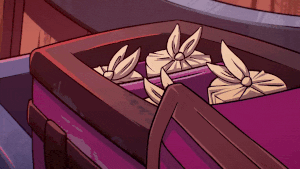



“The curious thing about legends is the way we can continue to be moved by the same stories. We’re comforted by familiar tales of friendship, courage, redemption. At times, the path of the hero might seem unclear, and the stories chaotic and directionless. Sometimes it may seem as though we’ve ended back where we began, but it’s clear to see how much we’ve grown on the journey—for although the story is over, there’s always room on the shelf for another.”
(3x14 Destiny Fulfilled)
#I've never made a gif set#tumblr does NOT like high quality gifs I had to butcher my babies#ummmmmmmmmmm I really like the end of s3.#yeah#lmk#lmk gifs#lego monkie kid#monkie kid#lmk mk#lmk swk#lmk macaque#lmk sun wukong#lmk mei#story motif#like bro the modern day lego version of Journey to the West did NOT have to fuck so hard but we're glad she's here#'we're comforted by familiar tales' familiar tales. familiar tales!#let me rest#have not gone this insane since tdp s2 I swear#my gifs
322 notes
·
View notes
Text

hotter than hell
[ID: Digital art of Vash and Wolfwood from Trigun Maximum in their alternative universe form based off an angel Vash and Devil Wolfwood illustration Nightow did. The both of them are sitting side by side, exhausted from the heat, Vash has his arms crossed, leaned against his knees and his head against his arms, eyes closed as sweat drips from his face. His wings spreads over the both of them to shield them from the sun. Wolfwood is sitting with his right leg extended and his left leg with the knee slightly up. His eyes are also closed with a clear grimacing expression. He uses one of his small devil wings to fan Vash, the text effect reads “flap flap”. Being in the shadows, the palette is cool, blues and purples. A sliver of light shines on the parts not covered by wings in a bright orange/yellow. END ID]
#vashwood#vash the stampede#nicholas d wolfwood#trigun#trigun maximum#this is such a random piece but i just wanted to draw these versions of them...#usually im a double angel vw kind of guy . i like the imagery of angel ww but his little antenna horns and triangle tail and devil wings#very cute... and frankly vw has duality in this field... of angel and devil. demon and diablo and whatnot#but ultimately the angel motifs suits vash the most if nightows side illustrations and book covers are anything to go by#like the covers for vol 5 and vol 8... he is lovely in wings - both the winged kind and his plant-esque kind#and mortal wolfwood my no.1 forever. the idea of devil ww guiding an angel vash back to heaven is a fun thought though#theres probably like 800 stories with that kind of angel/devil plot but im beaming it at vw#ruporas art
3K notes
·
View notes
Text

Genesis 4:1-5, translated by S. R. Driver, from The Book of Genesis, 1905
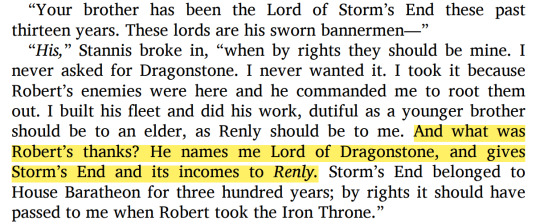
A Clash of Kings, Prologue - Maester Cressen
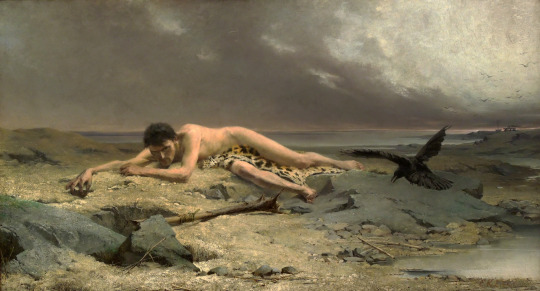
Emanuel Krescenc Liška – Cain (1885)
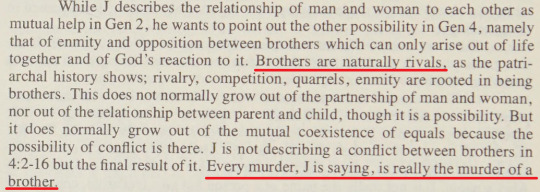
Claus Westermann, Genesis : a commentary, 1984

Arthur Segal - Kain und Abel (1918)

A Clash of Kings, Prologue - Maester Cressen

Natalie Diaz, A Brother Named Gethsemane, from When My Brother Was an Aztec

Lovis Corinth - Kain (1917)
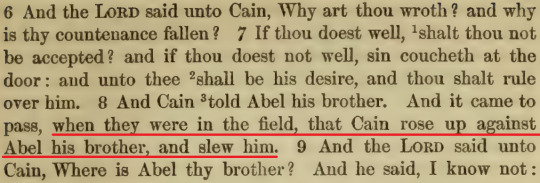
Genesis 4:6-9, translated by S. R. Driver, from The Book of Genesis, 1905

A Clash of Kings, Chapter 33 - Catelyn IV

Odilion Redon - Cain and Abel (1886)

A Clash of Kings, Chapter 33 - Catelyn IV

Genesis 4:9-14, translated by S. R. Driver, from The Book of Genesis, 1905

A Clash of Kings, Chapter 31 - Catelyn III

St. Omer, Benedictine Abbey of St. Bertin; c. 1190-1200

A Storm of Swords, Chapter 36 - Davos V

S.R. Driver, The Book of Genesis, 1905
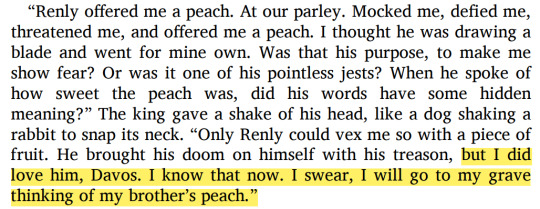
A Clash of Kings, Chapter 42 - Davos II

Lazzaro Pisani - Death of Abel (1885)

S.R. Driver, The Book of Genesis, 1905
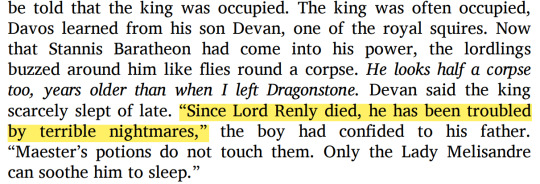
A Clash of Kings, Chapter 42 - Davos II

A Clash of Kings, Chapter 42 - Davos II

Cain and Abel - City of Zeven - 2015 (source)

Genesis 4:14-16, translated by S. R. Driver, from The Book of Genesis, 1905
#stannis baratheon#renly baratheon#house baratheon#he was my brother and i killed him#asoiaf#web weaving#valyrianscrolls#mine#fun fact i had to go to my uni library to find When My Brother Was an Aztec to get this quote. It's a lovely poem you should all read it#there is a longer section that fits the characters but it feels a little iffy taking something that is clearly personal#and apply it to fictional characters. like it has racial motifs that i don't feel comfortable saying 'oh exactly like my little characters#written by a white man!' yk?#anyway! i'm actually proud of this#i'm so normal about these biblical siblings < lying#i've said it before but this was baby's first horror story. i was obsessed with them as a kid
217 notes
·
View notes
Text


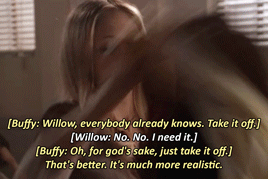
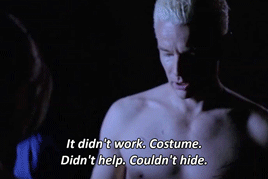

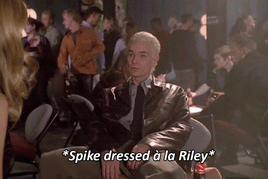
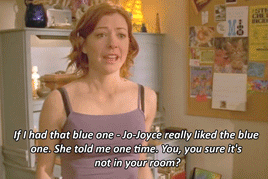

Willow | Spike - Clothing
“Why are you still in costume?”
“Okay, still having to explain wherein this is just my outfit.”
#I call this 'costume motif' my beloved#I feel like both characters wear their hearts on their sleeves#So let’s take a look on their actual sleeves#Obviously everyone’s clothes tell a story and their character growth but I feel like these two are hyper aware of it#Its costume its armor I think they rely on it almost weaponize it#Spike i feel is relatively up on the times for a vampire yet he hasn't changed his style in 20 years#He's found his bad boy rebel image and he's gonna cling to it dammit#And Willow needs her clothes to showcase her pride/rebellion/growth as a lesbian wicca#Their clothing means to them hey look at me I'm not a loser nerd/fool anymore I got power and confidence in spades#But its just a front - superficial but clothes equal security blanket#I think they put too much power in their clothes because they're convinced it can control how people see them#But more importantly so it can control how they see themselves#btvs#mygifs#ok i made the nonsense gifset now will my brain stop this random buffy obsession or is this just a phenomenon that will hit me every decade#buffy the vampire slayer#myfaveposts
204 notes
·
View notes
Text
haruka and what each animal on his case represents, an analysis
before we begin, general CW for the issues haruka's story deals with (neglect, child abuse, animal death, etc).

Throughout the MVs, animals play an important role in Haruka's story. I think each of these represents a part of Haruka, both how he perceives himself and how he wants to be perceived. Even if Haruka presumably has numerous animal victims, the ones most emphasized are dogs, fish, and rabbits.
1. RABBITS
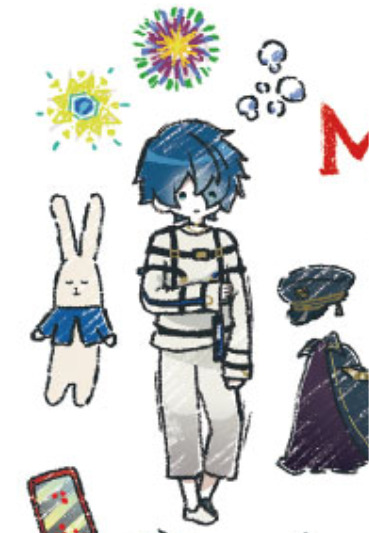
Haruka is seen on many occasions with his bunny plush. It’s so important that it appears not only in Weakness and Undercover but also in graffart’s collab, where each item is importan on the character's story in one way or another (like mahiru and the mantis). I see it as a toy from his childhood that he’s very attached to.
The fact that it’s specifically a rabbit is interesting to me, as the rabbit is a prey. If we go to the unique point of view of Japanese culture, rabbits are also quite related to the moon. The lunar cycles are also an important symbol in weakness, showing white, blue and finally red moons over a red sky. The origin of the relationship between rabbits and the moon is debated between admiration as they are perceived as objects of fertility and health because of their reproduction, or a legend that spread from India:
"a rabbit can't tolerate seeing people die and jumps into the fire to become food, then Indra rewards him for his sacrifice and takes him to the moon."
The theme of self sacrifice and the ultimate reward one receives for it is reinforced by Taoism, where the hare, like the moon, dies to be reborn and represents immortality. More popularly, rabbits are also associated with good fortune. It being white also points to innocence, and in turn to the pursuit of something that upon attainment brings discovery, an idea popularized by Alice in Wonderland. Even if it's more seen as a weak and tender animal, it has also been culturally represented as cruel and capable of aggression, closer to what Haruka is than the role of merely a prey. Haruka wants to be seen as weak prey that the strong hunt, to be pitied and loved for it. To be perceived as someone to be protected, as he cannot defend himself, but this is contradicted by his own actions both in weakness and throughout milgram. The prey becomes the predator and gives way to the next animal;
2. DOGS
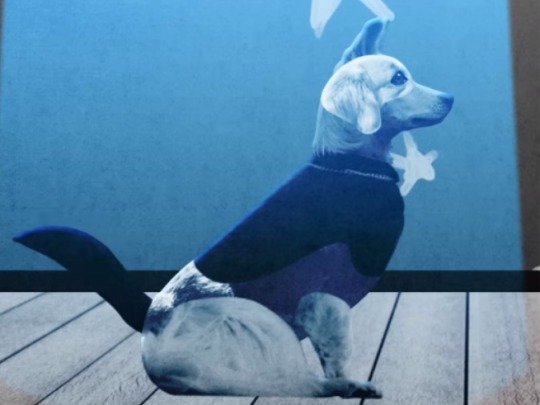
The dog is universally a symbol of loyalty and the effort it takes to form a training bond between a wild animal and a human. Dogs are seen accompanying men and being obedient to women.
Dogs are perceived as creatures that love unconditionally and are capable of giving everything to protect those they love.

In terms of personality and behavior, they are the closest animals to Haruka, who accepts and actively seeks to be guided and to be faithful for someone, to be used to feel useful and not abandoned.
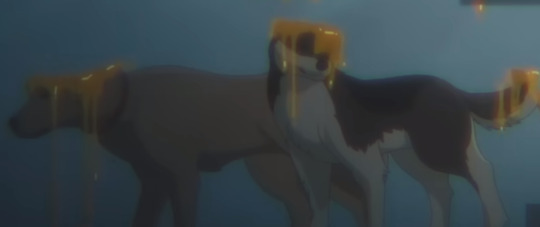
Even if they are domestic, the dogs whose breeds are distinguishable are large dogs, considered to be hunting dogs. Haruka being represented as a dog also creates a parallel with kotoko, who is represented by a wolf.
Haruka being represented as a dog also creates a parallel with kotoko, who is represented by a wolf. Dogs are the friendlier, "clean" version of wolves, domesticated to be obedient, while wolves maintain a certain solitary air of independence and savagery.
However, whenever a dog is featured on screen it is accompanied by loud instrumentals and rather graphic visuals. In Weakness, child Haruka accepts and expresses affection towards the animal, who apparently is suddenly injured and runs away from him into a forest, where he is disoriented and confused. Haruka follows its footsteps and ends up seeing his hands in horror, realizing that he's the cause of its injury.
The perspective of present Haruka isn't so different, who now attacks it, destroying it until the only remains are the necklace it was wearing, ultramarine liquid and eyes, which I consider represent the opinions of others and looks that judge him.
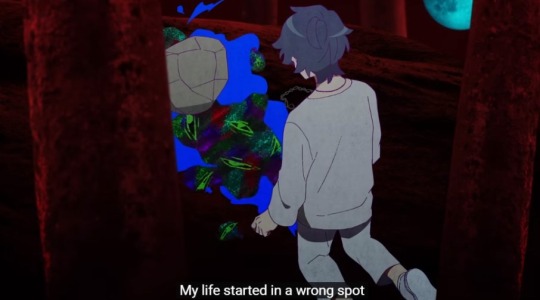
I think the fact that this dog bleeds the same color as Haruka's is a not-so-hidden hint at the fact that, in a way, Haruka is ending up with a part of himself (this time a bit smaller, not being human yet) to escape people's judgments.
There are also many sayings that by mistreating someone, "you are treating them like a dog", like an animal, something inferior, but that still sticks to what the human wants and believing all their words.
In AKAA, we see that instead of being a mix of at least two dogs, they're now separate entities and different breeds that dissolve as Haruka sings about being reborn. Again, dogs often appear in stories as spirit guides, helping humans enter and exit the realm of the dead safely, representing a middle ground between life and death. Dogs are followers of their owners, not leaders, and no matter how close a bond they form with humans, they are rarely recognized as equals to us.
3. FISH

Most of the similarities between Haruka and fish are presented visually, with Haruka being a passive spectator of his own life, observing others from behind something akin to a glass wall that separates him from normal people. He's constantly surrounded by water drowning, and in one scene is even presented at a fish-eye angle, being watched by his mother.
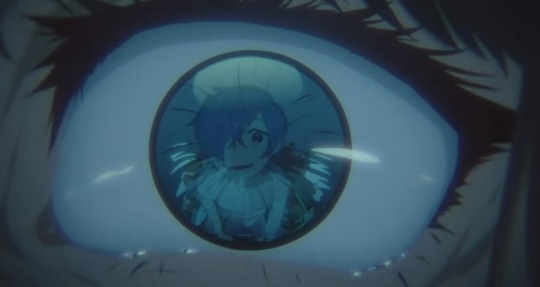
In AKAA we can see two specific species of fish.

Yellow bobfish: they're very complicated fish to keep in aquariums because they release toxins when stressed and are naturally solitary once they reach adulthood, it's not recommended to have more than two in the same tank because they are territorial and aggressive among their own species, however it's friendly and sociable with fish of other species. It responds to stress with aggression and attacks its own kind (in this case other weaklings) just like Haruka.

Clownfish: they usually inhabit anemones, forming a mutualism in which they find shelter and food. Toxins from anemones don't affect them as they develop immunity to them throughout their lives to eventually live in them. Anemones benefit from clownfishes cleaning its tentacles. Clownfish often eat parasites and are also known to steal more food from anemones than what they give in return. They are also capable of changing sex from male to female. Seeing this particular species depicted tells us a lot not only about haruka, but about his relationship with Muu, as for the first time it's not depicted as a mutual need, a codependency that endangers their lives if they become separated, but a mutually beneficial relationship where both can exist separately, but live much more comfortably by relating to each other in this way.
Extra: Insects (specifically butterflies) and parasites.
The symbolism of transformation and metamorphosis is so present that it even took the title of both voice dramas. Caterpillars can only wriggle and are no different from any worthless worm, but after a season, they manage to transform into a butterfly: beautiful, admirable, much more memorable and lovable. Having been forgiven and meeting Muu, Haruka manages to "fulfill" his metamorphosis and become someone he believes is better.
Still, from what is shown in AKAA, it doesn't seem that Haruka is entirely happy with this change happening - the monarch butterflies represents ambition and perseverance, but it seems to be rejected by haruka, who crushes it in his hands
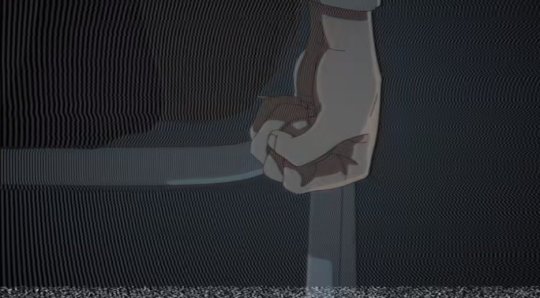
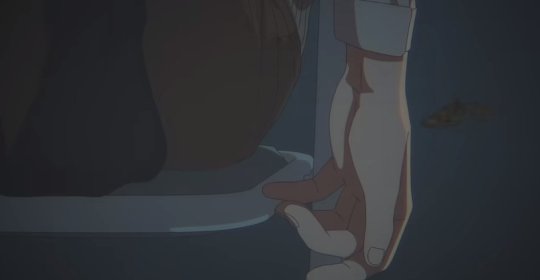
Haruka longs for this transformation, but is unable to fully accept it happening. I think it's because no matter how much he changes and wants to be someone else, he can't get rid of the disastrous image he has of himself, or he has forced himself not to change so as not to be disliked even more by others.
Now, Kotoko is an important figure to Haruka despite not interacting much. It highlights both his codependency (or mutually beneficial relationship) with Muu as much as the fact that he assimilates a parasite.

This is a point I've made several times before, but Haruka's way of socializing is based on taking parts of others and melding them on himself, especially women. It started by stealing his mother's necklace and taking it as his own, continues by killing Mirai and stealing what he lacks, and ends now in a much more obvious way with Muu, imitating her personality, accepting her accessories and the clothes she chooses for him and even copying her sprite pose a bit.
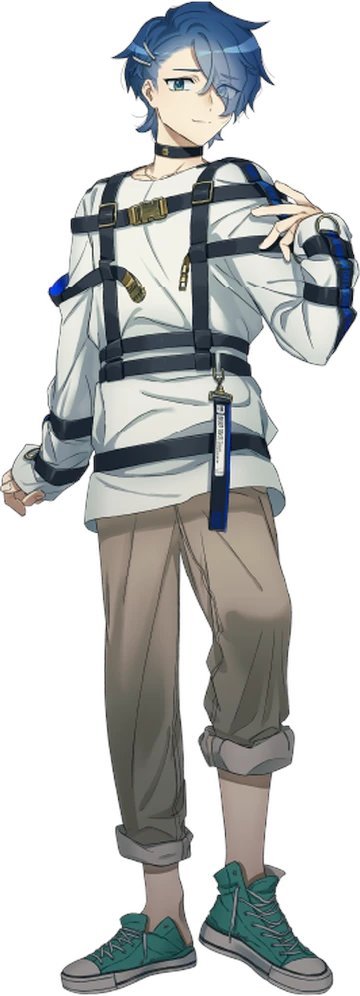

If he had become closer to Yuno and Mahiru, I'm sure he would also start imitating their behaviors in one way or another. Haruka lives by taking parts of the women he surrounds herself with, and he seems to want to take something from kotoko as well, but it's still unclear what he wants.
What does all of this have in common?
Not only is the theme of change and rebirth prominent, but every animal that Haruka comes to hurt relates in one way or another to his desires, thoughts, or parts of himself. Figuratively, we can say that Haruka's case is about him eliminating and hiding every part of himself, until he murders his human victim, Mirai, who at the same time is the closest and most prominent part in him, with whom he wishes he could reconcile and exist together, accepting each other - for, unlike his other victims, Mirai is often presented as a friend and someone Haruka misses. I have yet to write Mirai's analysis on its own, so whether she is also a part of Haruka or not and whether all his kills are figurative is up to each one's choice, I tend to wander between both sides because I like both scenarios.
In a less figurative way and taking the case more literally, these facts are simple trivia and interesting symbolism to consider when analyzing Haruka.
#milgram#haruka sakurai#milgram analysis#Weakness analysis#Akaa analysis#Analysis#I'm **SHAKING** DO WE ALL SEE ALL OF THESE HARUKA AS QUEER - GNC - MTF HINTS???#I HOEP WE ALL DO!!#Twt moot infected me with the haruka MTF disease and now I see it everywhere#There are a lot of queer motifs on haruka's story it drives me actually insane. It's so visceral#Anyways I hope you guys like this#It's been a lot since ive last posted an analysis and I really wanted to talk about this#I also want to write something specifically about Mirai and all of the possible interpretations she could have inside haruka's story#Both as a real person and an ideal concept
92 notes
·
View notes
Text
Not to post knight papyrus on main or anything but
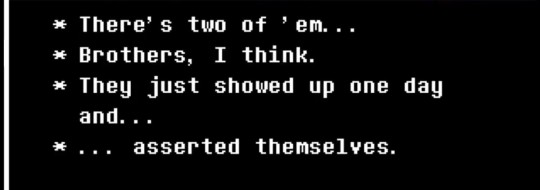





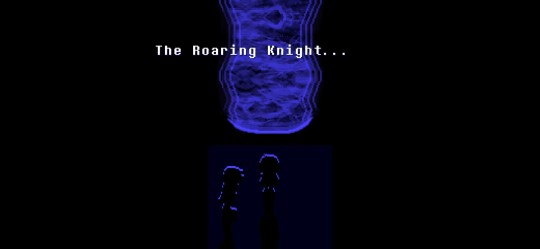

#huh#deltarune#papyrus#undertale#knight papyrus#please dont come for me i saw people getting VIOLENT over knight papyrus i want no part of that#i just think this is neat#i dont like theorizing and dying on theory hills (if you don't count dadster? id kill for that guy) but i do like the idea of#papyrus playing a larger role in this story#because his character fits the narrative and i also love him. a lot.#but please dont like. start fights in the notes. ill call your parents if you dont behave#its not that deep#anyway#when i played chapter 2 for the first time and saw this line i immediately thought GASTER cus pea brain and also one of his motifs#is the word interesting#but honestly i like this possibility much more#deltarune analysis#?
896 notes
·
View notes
Text
I've recently been watching these very interesting Star Wars video essays on YouTube (yeah I know, a rare breed) and it brings up these comments Lucas has made about how he views Star Wars as almost like a silent film in terms of how important the visuals are to him in comparison to the dialogue. But this essay also points out how important Lucas finds all of the "rhyming" moments in his trilogies and the way he utilizes them to remind you of something else for emotional or thematic reasons. And there's so many of them, both in visuals and in dialogue, and it's interesting to consider how important this is to him, the repetition for a purpose as well as the storytelling through visuals above everything else and then to look at Star Wars since the Prequels came out and realize how little has really been able to match up to those ideals since then.
The ONLY thing that's come out since the Prequels that I think really hits these two things the same way is, in fact, Andor. One of the things I noticed about the way people discussed Andor as it was airing in a way I haven't really seen for any of the other shows or films was the visual SYMBOLOGY. So many times I saw people noticing the Imperial cog everywhere, from the aerial shot of Narkina 5 as the prisoners escape to the architecture of Mon Mothma's house. There were people picking up on the use of items in Luthen's shop that are familiar from other things to give this idea that Luthen is from another time, he's attempting to preserve this world he lost, that if you're not looking closely enough you won't notice what he's really saying or doing with this shop. The color choices for the different locations and people got analyzed because the people involved spoke about how they intentionally utilized color to SEND A MESSAGE about the characters and the world. We know that the people who made the costumes and sets really worked hard to treat Star Wars almost like a period drama and study the history of the franchise as if it were a real place so that the things they came up with felt like they belonged in this world everyone knows so well even if it's completely new. And of course there were all of the myriad references to things from Rogue One, the constant repetition of "climb", the sunset on the beach, etc.
Nearly EVERY SHOT in this show was created with so much intention behind it in order to say something meaningful about the characters, the world, this specific story they're in, and the overall saga of Star Wars itself. It's insane how much greater impact this show was able to achieve through the incredibly careful usage of visual symbols and thematic repetitions, much like Lucas did before them. It feels like they didn't just study the history of the galaxy far far away, but they studied the history of STAR WARS and what Lucas was trying to do and say with this story. They peeled back his onion a bit more and were able to create something that really has that same visual feel even when it's not created for a child audience. It also is experimenting with its narrative style through its structure and through Cassian's character being allowed to be somewhat more reactive than proactive, and while that didn't work for everyone, it does feel like it's following in Lucas's footsteps of experimentation through Star Wars. Push the boundaries of what Star Wars is and can be and what you can say with it.
But this only works because they peeled the onion back enough to TRULY understand all of the messages Lucas was sending with it. They got the heart of Star Wars and despite its lack of space wizards, despite the lack of most major characters in the Saga, this was a show that honestly got the message more than just about anything else Star Wars has put out since the Prequels. The choices between selflessness and selfishness, the themes about how you always HAVE to make a choice even when it feels like you don't have any (sometimes ESPECIALLY when it feels like you don't have any), and how important it is to make sure to choose the path of compassion above everything else. The themes of connection to others, the symbiotic circle and the impact even the smallest person can have on world around them, it's RIGHT THERE and it's CENTRAL to Andor's storyline.
So yes, it experiments a little with narrative structure, but it's possibly the most Star Wars thing to exist Revenge of the Sith because it honestly truly GETS what Star Wars was about, both in its themes and in its filmmaking. A lot of people said that Andor didn't feel like Star Wars to them, usually because of the lack of space wizards and the fact that it's not a story aimed at children. But to me, Andor is EXACTLY what Star Wars is and has always been. They're stretching the boundaries of what Star Wars can be, but it's saying the exact same things Star Wars has always said, it's just saying it slightly differently. This doesn't feel like fanfiction to me, not really. Unlike things like the Mandoverse or the books, Andor isn't just taking some of the toys out of the sandbox and going to play with them somewhere else. Andor is IN that sandbox. It's building a slightly different sandcastle, but it's still within the sandbox, using the same sand that Lucas did.
#star wars#andor#star wars andor#i GET why some people feel like andor isn't star wars#but quite honestly that feels like not just a superficial reading of andor but a superficial reading of star wars as a whole#the only other show to come anywhere near andor's level was the obi-wan kenobi show#there's tons of visuals that are intended to link back to both the pt and the ot#from obi-wan and leia's costumes to things like the fire obi-wan is burned in and that flashback scene#i'm placing andor above owk still because i think andor takes it an extra level higher but owk is also in that sandbox#owk just got stuck with the fucking volume and the disadvantage of going from a movie to a miniseries#but it did far better with those disadvantages than just about anyone else and still told a VERY star wars style story#the fact that it feels like the prequels is exactly why everyone hated it#and it's exactly why i loved it and think it's the 2nd best thing to come out of star wars since rots#i'll give 3rd place to rebels since it tries once or twice to do some visual and dialogue repetition#but those kinds of things aren't something i see analyzed about rebels all that much tbh#everything else is just fanfic that made a profit#some of it is really BAD fanfic that thinks a cameo is the same as a visual motif. it's not. they suck. stop doing them.
79 notes
·
View notes
Text
low key i think to deny Riko's trauma is to deny his narrative importance in the story.
like Riko's trauma related to his father parallels neil's. His concept of brotherhood adds complexity to Andrew and Aaron's relationship. He acts not just as an antagonist but as a foil to other character's relationship to trauma and violence.
to solely view riko through the lense of his actions is to miss the point. He is a character in a story, not a real breathing human being.
#i don't know guys like i though we were having fun here#lets go back to making up literary motifs that are probably nonexistent in a self published book series thats basically a sports manga#i'll start#isn't it nifty that riko was abandoned by his father and then abused and ostracized by his guardian figure in a very similar way to neil#isn't it fun that riko was cast aside by his father for his brother just as andrew was cast aside by his mother for his brother#isnt it fun that aaron kills someone to protect his brother while riko's story ends with his brother killing him#love earned through death in both ways#isnt it fun that riko's hunt to be the best ends with his brother killing him in the same way he essentially 'killed' kevin#by smashing his hand#isnt it fun how riko is just as desperate for love and attention and belonging as everyone else#there is a story in which riko is saved and heals from his past in the same way every other character does#the fun part is that story exists yet it is not the story that is told#like come onnnnn#“riko is evil”#“rikos trauma isnt as bad as *insert character”#“riko did this - riko did that - bluh bluh bluh”#im boreeeeeeddd#gnat be quiet#riko moriyama
112 notes
·
View notes
Text



“Chuuya Nakahara does not dream.
His awakening was similar to muddy bubbles rising to the surface.
[...]
Chuuya sat up. He was sweating a little around his chest, a reminder of some sort of violent emotion that had swirled around inside of him like a whirlpool in the sea. But what that emotion was, he couldn't remember.
That always seemed to be the case, these days.”
Storm Bringer CODE 01
Did he have a nightmare?
#I was thinking about how water is a huge motif throughout chuuya's life.#chuuya and his clone being kept in the tank in the lab#rimbaud associating the arahabaki incident with the sea#chuuya is currently DROWNING in the manga#it's a recurring symbol throughout his story so far. Bad water. muddy bubbles#also#contrary to what he thinks chuuya DOES indeed dream#it's just. whatever he's been through was just so traumatizing his brain literally doesn't allow him to remember.. thatso SAD omg#bsd#bungo stray dogs#chuuya#stormbringer#doodles#doodle#comic
651 notes
·
View notes
Note
Do you enjoy underfell? I thought you disliked aus /genq
i don't dislike the concept of AUs itself, I'm just not a fan of like... the subculture that spawned around them in the UT fandom specifically and how it eventually took over almost all canon content (especially when it limits itself to the bros)
i like aus visually! i am an artist at heart after all. it's just that, if I'm going to care about them as stories and not just fun design ideas, my bar is uhh almost impossibly high the further you move from canon lolol.
#uf being one of those! the story is centered on certain characters (mainly asgore) behaving very ooc#so as a stickler for canon I don't have much interest in it#but there is a very clear visual idea and motif in the redesigns that ties every character together very efficiently#and also fucks like a rabid rhino#so i can appreciate its visual/aesthetic aspects instead#i mean you can't understate the impact that good *artists* specifically had on the proliferation of aus back in the day#good writing is almost inseverable from good characterization because dialogues and characterization ARE an integral part#of what makes writing good. while good art (as much as it too is tied to its own conventions) is free-er from the bounds of accuracy#as was as being easier & faster to consume. writing has to be read first. you can just look at a piece of art and go ''wow that looks sick''#without thinking about logical details/accuracy#you can show a pic of sans to an artist who's never touched the game and they might draw you the most gorgeous piece of art you've ever seen#it's significantly harder to do for writing#swap aus are a fun design challenge to see how you'd incorporate different aspects of some characters visual signatures into another#it's a game of translation of sorts. but if you want to treat it like a story well... the matter becomes a lot more complicated#answered asks#au tag
103 notes
·
View notes
Photo



my favorite wordgirl character, jerma
#turtlearts#wordgirl#wg#jerma#dr two brains#steven boxleitner#ok funny story. my lockscreen is fanart of jerma right#and my mama saw it and said is this the guy you like? and i was like :D YAS ITS JERMA 985 MY FAVORITE GUY#and my mama was like oh is that the guy you draw all the time? and i was like draw all the time?? i havent really drawn jerma all that much-#WAIT. OH. OHHHH.....#my mama confused steven with jerma. i exploded#but also yeah i see the similarity so much#ive come to the conclusion that i like 1 (one) kind of white guy and theyre weird and funny guys that have a rodent motif#jerma and steven and will wood are all the same to me. sorry#jerma is the rats rats we are the rats guy. 2 brains is self explanatory. will wood has lovely pet rats.#and he sings about them. his new album even has the rat motif and i love love tomcat disposables argggghhh#oogh. i want a pet rat. lovely creatures#also why do i keep putting so much effort into what should otherwise be low effort memes???????? its driving me insane#it makes the joke unfunny and the payoff doesnt equal the amt of work that went into it!!!!!!!!! arrrrgggghhh#i literally spent so many hours on the burger one and i hate it so much. cries
939 notes
·
View notes
Note
I might be misremembering but I assumed the "just a story" line in AHiB was referring to the legend of Wukong sealing away DBK, not JTTW/SWK's existence as a whole
I guess if you wanted to you could interpret it that way (and it is totally applicable there), but it also applies to the broader narrative in lmk itself. Jttw is also notably referenced a decent amount throughout the "A Hero is Born" special:



Tang: “The thing you need to understand about the old legends, is that the story is never finished. There maybe be no more pages left to turn, but there’s always more to the journey."
Which, this line by Tang is the first instance of story motif in LMK as a whole. It's then "book ended" by another narration by Tang later in 3x14:
Tang: “The curious thing about legends is the way we can continue to be moved by the same stories. We’re comforted by familiar tales of friendship, courage, redemption. At times, the path of the hero might seem unclear, and the stories chaotic and directionless. Sometimes it may seem as though we’ve ended back where we began, but it’s clear to see how much we’ve grown on the journey—for although the story is over, there’s always room on the shelf for another.”
Like, even if some details don't match and some things changed, the AHiB special is foundational. It's constantly referenced back to in one way or another, and is the first instance of a significant amount of motifs and themes, for example:
Hand Motif
Reflection Motif
Theme: Identity (1) (2) ("You might have that old fool's staff, but you are not the Monkey King." in AHiB -> "Well, I'm not the Monkey King! Okay!" in RoTSQ)
Running Away
Theme: Self Belief ("Just believe in yourself! Even a smidge makes all the difference"/"Nothing is impossible if you just believe in yourself!" -> "It's always my fault!") (1) (2)
Turning Around Motif
Kneeling Motif
So, when thinking about "the story never being finished", it reminds me of MK's recent conflict of wanting things to stay the same, of not wanting to move forward:
MK: “Honestly? I’m kinda liking the world as it is, right now. So...if it could just stay like this, forever? That would be awesome.”
Sun Wukong: “Yeah well...forever’s a long time bud...trust me.”
(4x01 Familiar Tales)
-
MK: "You ever wish things will just- stay like this, like they are right now?"
Sun Wukong: "Pssshhkk, where's the fun in that?"
(4x14 Better Than We Found It)
-
Ultimately, MK wants his story to be finished, but that's not how it works. There is no "final chapter" so to speak, there's just life, and you have to keep going and picking up the next book and moving through the next chapter.
I made a whole comic around this idea if you wanted to go look!
But yeah, DBK's sealing is the first instance in a long line where the story "isn't finished" because the seal doesn't hold, and plans move forward. This happens again with LBD and then later with Azure. It can even apply to things like the Samadhi Fire (and most likely the Jade Emperor's Seal in the future)—supposedly, sealing these things away should have been the end of the story, of their story, but it wasn't. So it's interesting to take that line and use it as a sort of framework to view the rest of the show in
18 notes
·
View notes
Text
i am once again wishing that reiju was written in a more interesting way in fics. i think she wld be fucked up in the way of "every day i tightrope a line of protecting my brother against a family that wld gladly revoke my favored position" and "am i my brother's keeper". contradictions in contradictions. unable to empathise/incapable of excising her sympathy. equal parts wondrous and revolted by the depth of human emotion that sanji feels. the only one in her family that takes after both her parents' will - her father's soldier and her mother's daughter. yeah sure you could write her as tepid and simply dust your hands off after damning her for her compliance in the abuse cycle but what if we made her interesting.
#[grips you by the shoulders] SHE CLD BE SO INTERESTING....#in an ideal world i wld've loved for reiju to disappear from the story completely#as in she makes it that she is no longer beholden to anyone#not anyone's soldier not anyone's sister not anyone's daughter#i am not looking at this from a chara arc centered around sanji#i think it wld be most fitting for reiju to suddenly be removed from the constant balancing act#smthng smthng butterly motifs ... smthng smthng a poison master that's been stewing in poison for her whole life#oh shit the themes have got m— [line is cut]#vinsmoke reiju
135 notes
·
View notes
Text
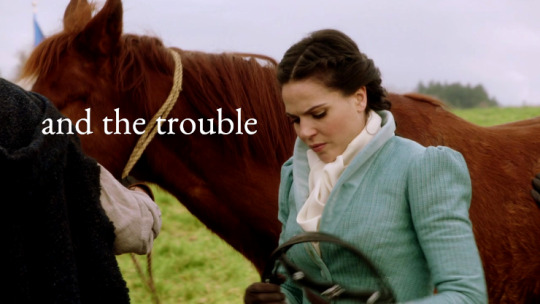




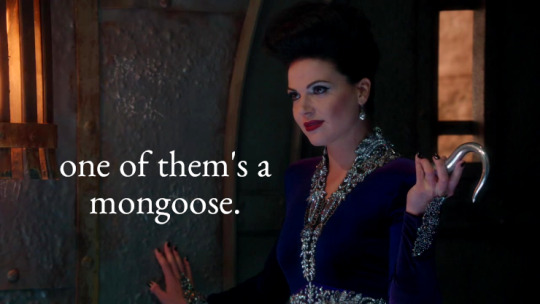
- Terry Pratchett, Witches Abroad
#regina mills#once upon a time#ouatedit#ouat#userstorybrooke#regina mills mongoose motif save me...save me regina mills mongoose motif#and it's the story of us
58 notes
·
View notes
Text

and maybe it'll all make sense
at the end of the world
#the sims 4#ts4#ts4 render#sims 4#ts4 story#simblr#aliya's sims#valerie#chance#gen 2#redemption#FUCK YEAH BABY WE GOT ANOTHER MOVIE POSTER#can you guys see the notebook influence here#really leaning into the water motifs i've inadvertently built up in this story#please listen to the song#it's good for your soul and my soul and everyone's soul#I'M FUCKIN READY#happy valentine's day 💖
69 notes
·
View notes